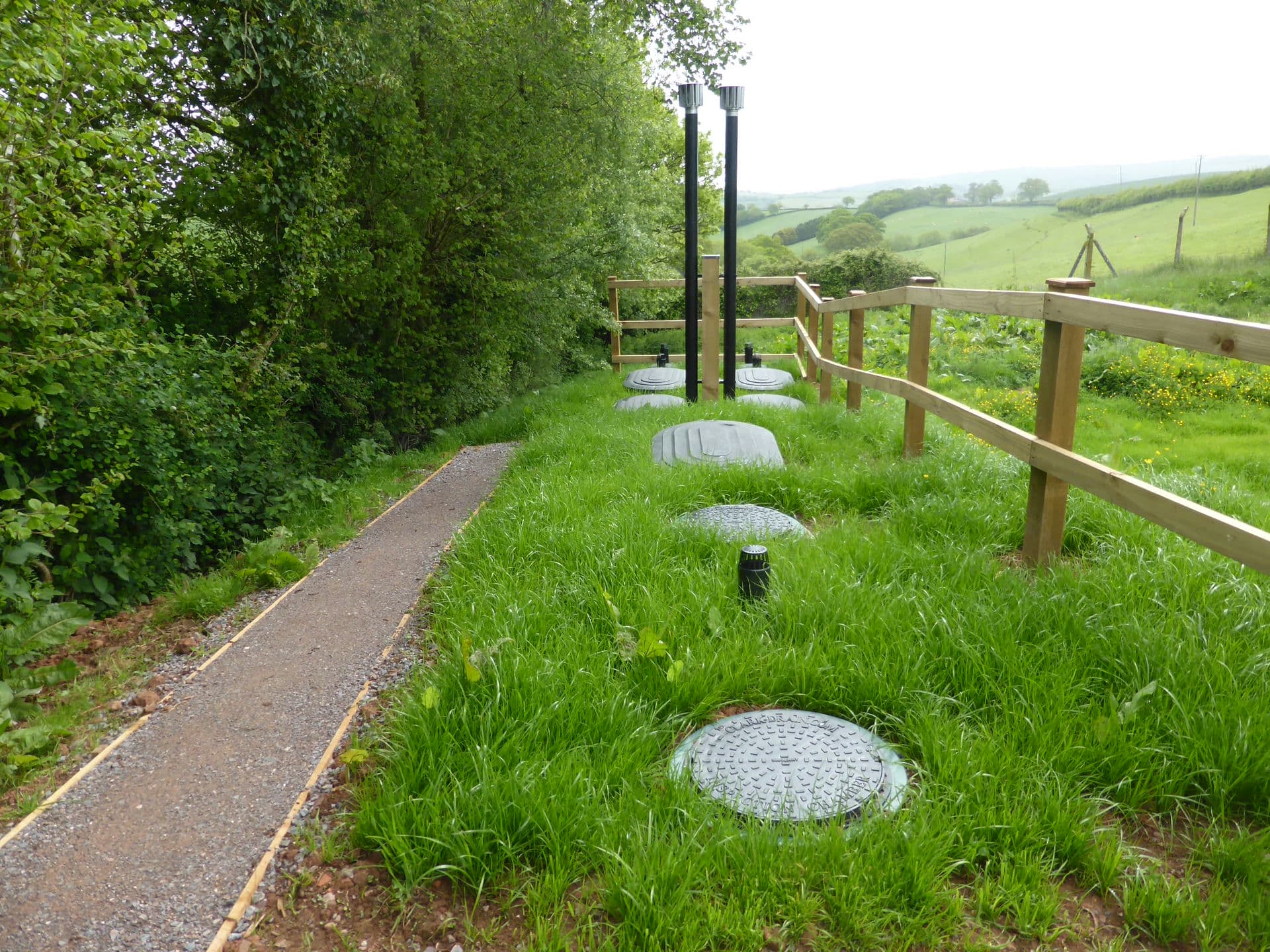If you are looking for an environmentally friendly and affordable way to treat your wastewater, non-collective sanitation devices may be the right choice for you. There are a variety of treatment devices available on the market, each with its own advantages and disadvantages. In this blog post, we will discuss the different types of non-collective wastewater treatment devices and how to choose the right one for your home.
 So, first, what exactly is wastewater? It is the combination of black water (toilet wastewater) and greywater (washers, sinks, cooking, and bathroom showers). The sanitation systems must be engineered to accommodate the treatment of all of these wastewaters. A sewage system may be put in place during building or renovation. Each dwelling not connected to the sewerage system must have its own wastewater treatment system.
So, first, what exactly is wastewater? It is the combination of black water (toilet wastewater) and greywater (washers, sinks, cooking, and bathroom showers). The sanitation systems must be engineered to accommodate the treatment of all of these wastewaters. A sewage system may be put in place during building or renovation. Each dwelling not connected to the sewerage system must have its own wastewater treatment system.
Non-collective sanitation is a type of wastewater treatment that does not require a central sewage system. Instead, each individual home or business has its own treatment system. There are many advantages to non-collective sanitation, including lower costs, less infrastructure, and less environmental impact. Non-collective sanitation is also easier to maintain than a central sewage system.
If your existing sanitation solution has been found to be defective by the local authority (or SPANC) after a control visit, you are required to upgrade it.
There are two main types of non-collective sanitation devices: compact filters and soil-based treatment systems. Compact filters are small devices that can be installed close to your home or business. They use bacteria to break down pollutants in the water. Soil-based treatment systems are larger devices that are installed outside your home or business. They use plants and soil to filter pollutants from the water.
There are many factors to consider when choosing a non-collective wastewater treatment device. The first step is to determine your needs and preferences. Do you need a compact device that can be installed close to your home or business? Or do you prefer a larger soil-based system that is more voluminous? Once you have determined your needs, you can begin to compare the different devices on the market. Consider the following factors:

 How does it work? The roots of these reeds are particularly well developed, allowing them to drain mineral nourishment, bring oxygen, and serve as support for aerobic bacteria. The plant roots are the source of organic nitrogen for terrestrial plants. It is essential to understand how bacteria can break down and mineralize organic waste (sludge). This sludge will be accessible to the plants. Once a year, in autumn, it is necessary to proceed to the mowing i.e. to cut the vegetative part of the reeds. This operation will bring oxygen to the pond to better filter the wastewater.
How does it work? The roots of these reeds are particularly well developed, allowing them to drain mineral nourishment, bring oxygen, and serve as support for aerobic bacteria. The plant roots are the source of organic nitrogen for terrestrial plants. It is essential to understand how bacteria can break down and mineralize organic waste (sludge). This sludge will be accessible to the plants. Once a year, in autumn, it is necessary to proceed to the mowing i.e. to cut the vegetative part of the reeds. This operation will bring oxygen to the pond to better filter the wastewater.
How does it work? A primary decanter, also known as a primary tank, is the first step in treating wastewater. The bacteria present in the biological reactor, which receives oxygen, handle the secondary treatment. These bacteria are fixed on support (mineral, plastic, ...). The treated wastewater is then passed through a clarifier and reintroduced to the primary clarifier, where it is stored. The treated wastewater is discharged by permeation into the soil, irrigation of plants, or discharge into a ditch or a river (if the regulations in place in the country allow it). When the sludge reaches 30% of the plant's volume, it must be emptied.
How does it work? There are 2 main families of free cultures: The "free culture" which works on the same principle as the treatment plants of the big cities. The "SBR" technique "Sequencing Batch Reactor", is a version of the free culture micro-stations where the biological reaction and the clarification phase take place in the same compartment. This technique allows a lesser production of bad odors than the fixed culture systems or with a primary tank, without being as efficient as the free-culture systems.
2. Soil-based treatment systems: Soil-based treatment systems are larger devices that are installed outside your home or business. They use plants and soil to filter pollutants from the water. These systems consist of a septic tank (also called "Primary Tank" at the entrance) and a treatment and infiltration system in the soil.
How does it work? The soil in place treats the wastewater and removes it. The sewage is then dispersed in several trenches at a shallow depth. Under normal circumstances, 15 linear meters per person are required.
How does it work? The primary tank retains the wastewater from the house. The wastewater is filtered in a sand filter at the end of its treatment process. The microorganisms attached to the sand purify the water. The wastewater is first processed in the gravel portion, after which it's completed in the sand part.
 It's the only one in this class that may be put into wetlands, and it works even if the soil isn't suitable for dissemination. It requires a surface of 60 to 120 m². It's a type of sand filter that is built above the ground and not inside an excavation. It works similarly to a vertical sand filter, but it is located above ground rather than below it. Infiltration mounds may be partially or entirely above ground. It is common to find an infiltration mound at the bottom of the garden, which will be a sandy bed that is higher than the surrounding plants. In practical terms, you'll have a "mound of dirt" in your garden.
It's the only one in this class that may be put into wetlands, and it works even if the soil isn't suitable for dissemination. It requires a surface of 60 to 120 m². It's a type of sand filter that is built above the ground and not inside an excavation. It works similarly to a vertical sand filter, but it is located above ground rather than below it. Infiltration mounds may be partially or entirely above ground. It is common to find an infiltration mound at the bottom of the garden, which will be a sandy bed that is higher than the surrounding plants. In practical terms, you'll have a "mound of dirt" in your garden.
How does it work? A lifting station will be used to direct wastewater from the primary tank to the infiltration mound. The wastewater to be treated will then be dispersed throughout the mound using spreading pipes. The treated sewage is then passed from layer to layer, beginning with the coarsest gravel layer and ending with the finest sand layer. These layers are put in place from top to bottom. The cleaned wastewater is discharged into nature at the bottom of the mound.
There are many different non-collective wastewater treatment systems to choose from, and the right one for you will depend on your specific needs and circumstances. Septic tanks, compact filters, free cultured micro purification stations, fixed cultured micro purification stations, soil-based treatment systems, and infiltration mounds are all viable options, each with its own advantages and disadvantages. Carefully consider all of your options before making a decision. This is why it is very important to call upon the local authority and the research department which will study your soil and your house in order to propose to you all the feasible sewage solutions to treat wastewater from your home.
Find out in less than a minute which BIOROCK system is the most adapted to your project: HERE